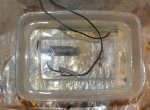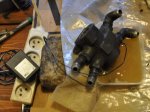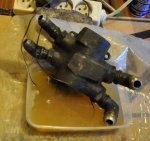I've thought about post-derusting preservation a good bit, as I've derusted quite a few things over the years. My answer is: it depends.
The good news is that electrolytic derusting does a good job of removing chlorine free radicals from the metal, which means that the metal will rust when it comes out of the bath, but the rusting won't be catalyzed and accelerated even if the item was exposed to salt at some point before derusting. You're starting off with a clean slate, chemically speaking, except for the aforementioned hydrogen embrittlement.
if it's an internal part of something that will be bathed in oil - I successfully resurrected a differential that had been left in a field partially open to the environment, then the answer is just to bathe it in oil. I got good results from this with the diff carrier and its components - just bathed them in used motor oil and stored in a heavy plastic bag until it was time for assembly. That's also what I did for the very first item I derusted - a fine Goes & Co. monkey wrench from about 1900. It was a rusty mess when I got it, but removing the wooden handle and derusting the rest resulted in a wrench that looked great -I could read the name and patent stamping easily in what I thought was pitted rusty metal.
If it's something like a bodywork item, then I tend to spray it with one of the rust catalyzing primers and then with a protective layer of an appropriate general purpose primer-sealer over that. If it's the backside/inside of something I usually use an epoxy primer. I did a battery tray on a truck about ten years ago and it remains completely rust-free after this treatment.
Stuff that gets too hot for normal paint, or I don't expect to paint for a while, or I might want to powder coat gets sprayed with phosphoric acid solution (metal prep). This puts an insoluble phosphate layer on the ferrous metal (iron phosphatizing - first cousin to Parkerizing) and makes it pretty resistant to corrosion while sitting on the shelf in the shop. A rinse in water after the acid has done its work followed by drying the part thoroughly renders it ready for application of VHT paint, powder coating, or shelf storage.





